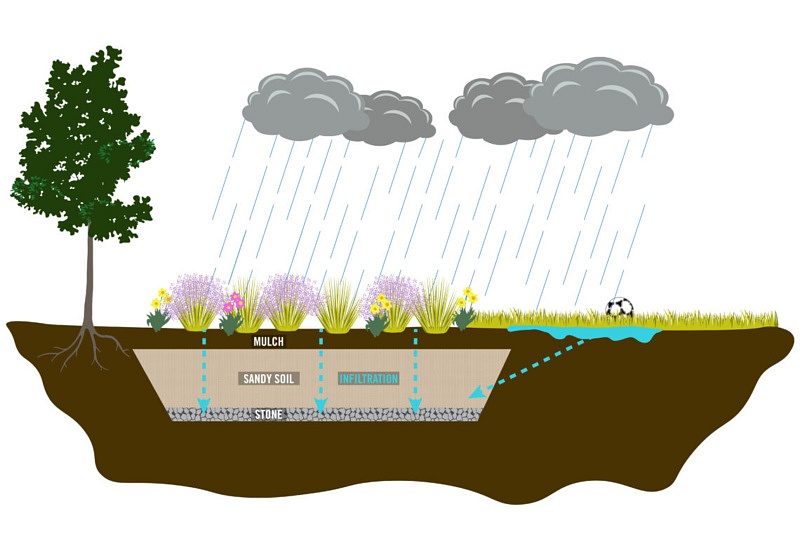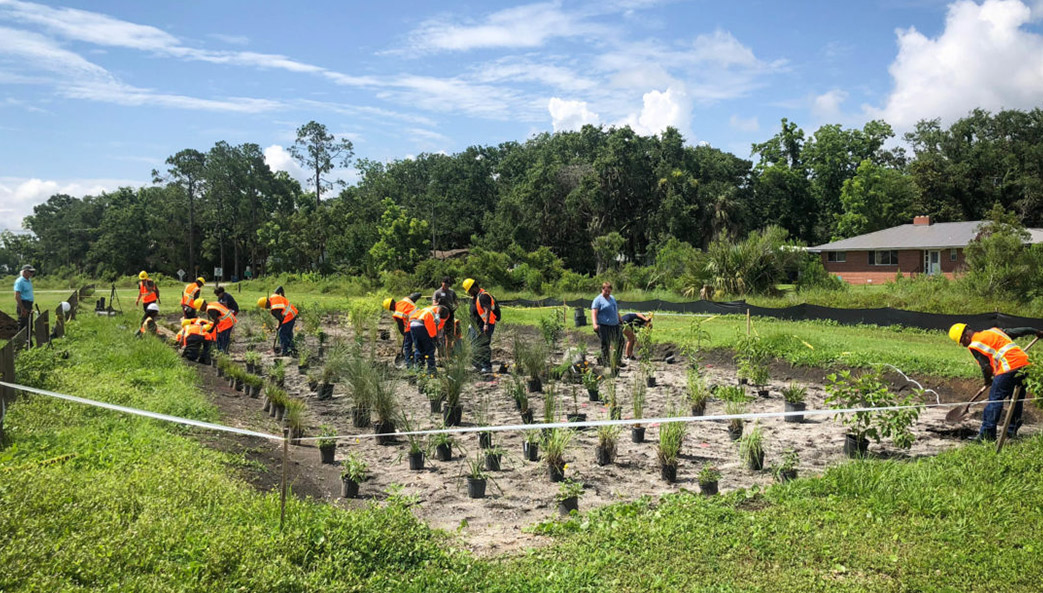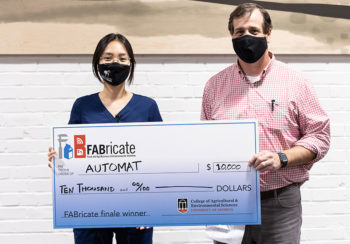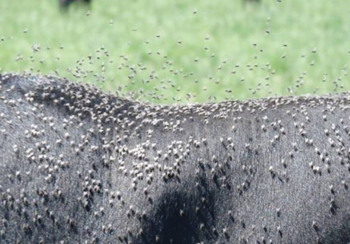Visitors to Howard Coffin Park in Brunswick, Georgia, will get an eye-pleasing lesson in stormwater reuse, thanks to a 3,000-square-foot bioretention cell featuring native plants and new soil, designed by the UGA Marine Extension and Georgia Sea Grant.
A bioretention cell captures and treats runoff, according to Jessica Brown, stormwater specialist, who oversaw the installation. “It’s a form of green infrastructure that helps protect and restore habitat by mimicking the natural water cycle.”

Located next to a tidal ditch, the new feature will act as a buffer for the park. When it rains, excess water from the soccer field will flow into the bioretention cell, which consists of layers of sandy soils, mulch and stone. Pesticides, fertilizers and other chemicals will be filtered out through these layers instead of running directly into the tidal creek.
Brown worked with the city’s engineer to design the bioretention cell, and city employees did the construction. Twelve students participating in a landscaping course through a U.S. Department of Labor Job Corps Center in Brunswick assisted with the planting.
This brief appeared in the fall 2018 issue of Research Magazine. The original press release is available at https://news.uga.edu/green-infrastructure-brunswick/.






